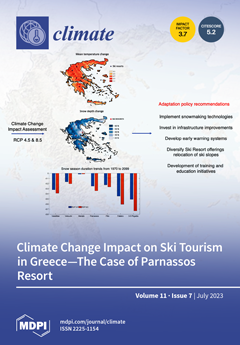This paper discusses what is, to our knowledge, the oldest subdaily measurement series of humidity taken over several years. Louis Morin performed the measurements in Paris, three times a day, between May 1701 and June 1711. A correlation analysis of Morin’s humidity measurements
[...] Read more.
This paper discusses what is, to our knowledge, the oldest subdaily measurement series of humidity taken over several years. Louis Morin performed the measurements in Paris, three times a day, between May 1701 and June 1711. A correlation analysis of Morin’s humidity measurements with various meteorological variables yields results comparable to those of a parallel analysis of the relative humidity measurements of the E-OBS data: the Spearman correlation coefficient between the humidity and the daily minimum temperature is −0.43 (
p < 0.01); with the mean temperature, it is −0.54 (
p < 0.01); with the maximum temperature, it is −0.59 (
p < 0.01); with the diurnal temperature range, it is −0.65 (
p < 0.01); and with the total cloud cover, 0.33 (
p < 0.01). However, with a Spearman correlation coefficient of 0.11 (
p < 0.01), no correlation is found with the precipitation data. Further evidence for the plausibility of the measurements is shown by a day-by-day analysis of the first half-year of 1709. Here, abrupt changes in the humidity measurements of Morin can be explained by the other measurements/observations of Morin. According to the correlation analysis, indirect notes in his journal, and others, we argue that Morin used the hygrometer developed by Vincenzo Viviani. However, the conversion of the data to common units is not performed and is subject to further research.
Full article





